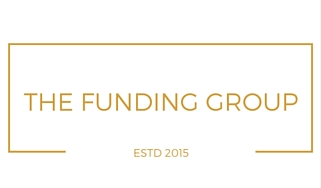Conforming loans are mortgages that meet the dollar limits and funding criteria set forth by the Federal Housing Finance Agency and Freddie Mac. Conforming loans can be advantageous for borrowers with exceptional credit because of their low interest rates.
How a conforming loan works
The government-sponsored entities responsible for driving the market for home loans are the Federal Mortgage Association (or Fannie Mae) as well as the Federal Home Loan Mortgage Corporation(FHLMC, or Freddie Mac).
These quasi-governmental agencies have established standardized guidelines and rules to which single-family dwellings (mortgages for one-unit properties) must conform to in order to be eligible for agency backing.
Fannie Mae or Freddie Mac don’t issue mortgages. They instead insure mortgages that are issued by banks and act as secondary markets makers, if those lenders want to sell the mortgages.
Conforming Loan Limits 2021
When referring to the amount of the mortgage, the term “conforming” is used most commonly. This figure must be less than a dollar figure known as the conforming limit. It is set annually by the FHFA.
This baseline limit for 2021 is $548.250 in most of the United States. The limit is higher in high-cost areas like San Francisco or New York City. These areas have a ceiling of $822,375. This is 150% off $548,250.
There are special statutory provisions that establish loan limits for Alaska and Hawaii, Guam, Guam, the U.S. Virgin Islands, and Guam. These areas have a baseline loan limit of $822,375 for properties with one unit in 2021.
Other conforming loan rules
Other than the loan amount, conforming loans must also adhere to certain documentation requirements. These include the borrower’s loan–to-value ratio (which includes the size of down payment), ratio of debt-to-income, credit score, history, and other requirements.
Conforming Loans: The Advantages
Conforming loans offer consumers a low interest rate which is a benefit. Conforming loans are advantageous for consumers because they have low interest rates.
A buyer with a low downpayment may need to buy mortgage insurance. The cost will vary depending on the terms of the loan. For 30-year loans up to $625,000, and with a 95% LTV ratio, the cost per year is approximately 0.85%.
Conforming loans are also preferred by lenders because they can easily be packaged into investment bundles and sold on the secondary mortgage market. This allows financial institutions to issue more loans and makes them more profitable.
Conforming Loans vs. nonconforming Loans
Mortgages with a mortgage amount that go over the conforming loan limit will be classified as nonconforming, jumbo. Nonconforming loans are not in high demand because Fannie Mae or Freddie Mac buy conforming loans only to repackage them for secondary markets.
Nonconforming mortgage terms and conditions can vary from lender to lender. However, the minimum down payment and interest rate are usually higher as these loans pose greater risk to a lender.
The loan cannot be guaranteed by government-sponsored entities mainly because there is more money involved.
Conventional Loans vs. Conventional Loans vs. Conforming Loans
Sometimes, conforming loans can be confused with conventional loans/mortgages. While the two types may overlap, they are different. Conventional mortgages are a larger category.
This loan can be offered by any private lender and not through a government agency such as the FHA or U.S. Department of Veterans Affairs (VA), Fannie Mae and Freddie Mac. This is where confusion can arise.
Conventional mortgages are not affected by the size of the loan. All conforming loans are considered conventional. However, not all conventional loans can be considered conforming.
Understanding the Conforming Loan Limits?
The FHFA sets the conforming loans limit each year. It has regulatory oversight to make sure that Fannie Mae Freddie Mac meet their charters and mission of promoting homeownership among lower-income and middle class Americans.
To adjust conforming loan limits, the FHFA uses October-to-October percentage increases/decreases in average housing prices as part of the Monthly Interest Rate Survey. (MIRS).
The FHFA requests a sample from mortgage brokers to provide information on the terms and conditions of all single-family, fully amortizing, buy-money, and non-farm loans they have closed in the past five business days.
This survey gives monthly information about interest rates, loan terms and house prices, by property type, loan type (fixed or adjustable rate), lender type and loan type. It also includes data on fixed-rate loans for 15- to 30-years.

